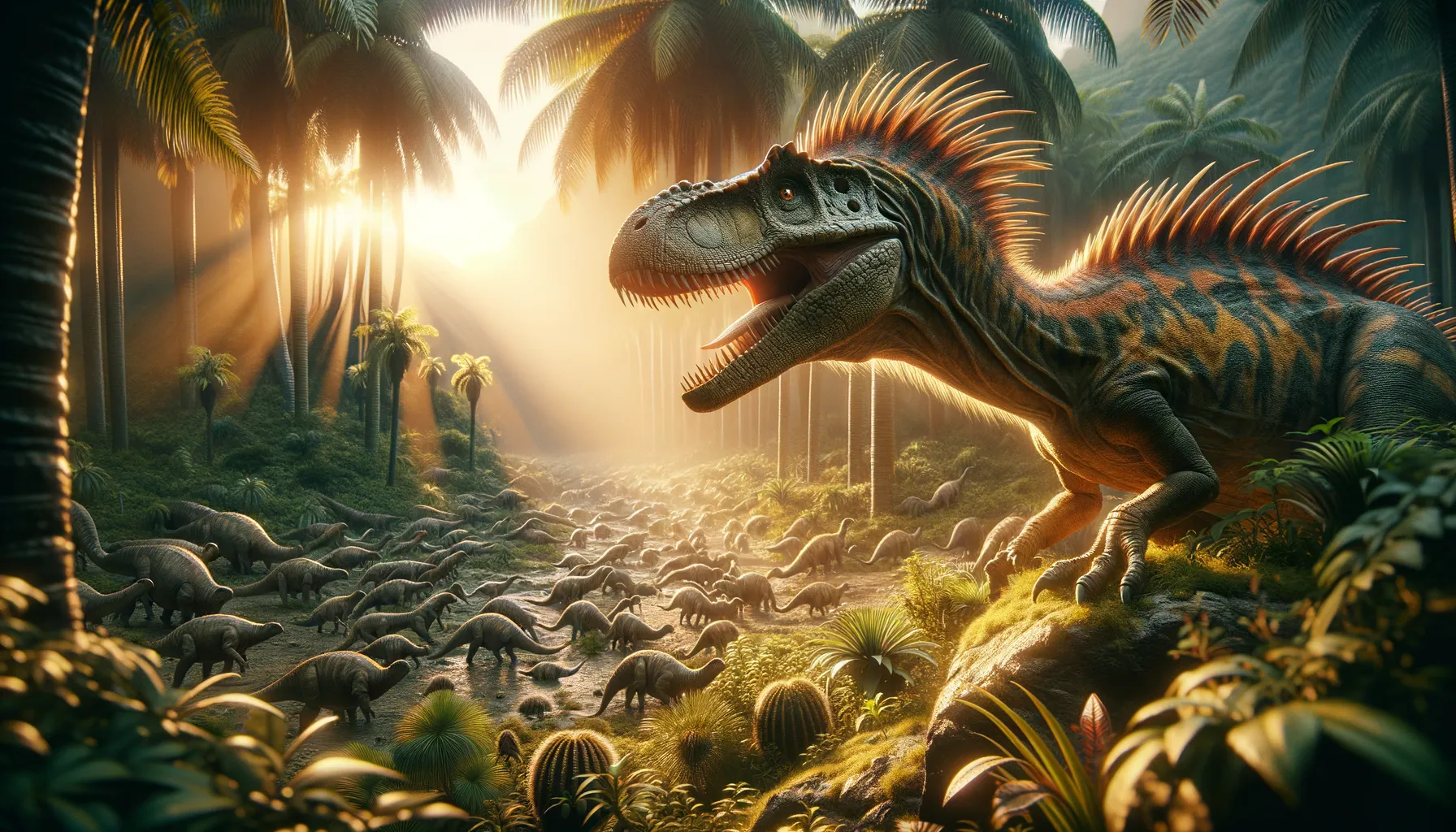
Echinodon
Tiny, tenacious survivor of ancient landscapes.
Period
Cretaceous
Length
Roughly 60 cm to 1 meter long.
Height
Approximately 30 cm at the hips.
Weight
Around 4.5 to 7 kg.
Echinodon was a small, plant-eating dinosaur that lived during the Early Cretaceous period. Known for its distinctive teeth, it belonged to a group of herbivorous dinosaurs called heterodontosaurids, which were among the earliest known ornithischians. Echinodon's fossils primarily come from England, offering insight into its unique adaptations that helped it survive in the varied environments of the time. Despite its small size, Echinodon played a crucial role in the ecosystems of its era.
Diet
Echinodon was an herbivore, primarily feeding on plants, including ferns and possibly seeds. Its teeth suggest it might have had a varied diet, capable of processing different types of vegetation effectively.
Hunting
As a herbivore, Echinodon did not hunt but would have foraged for food in its environment. Its small size might have necessitated quick movements to avoid predators while eating.
Environmental challenges
Living in the Early Cretaceous, Echinodon faced a changing climate with fluctuating temperatures and evolving plant life. Predators posed a significant threat due to its small size, which also required it to find suitable habitats for feeding and avoiding danger. Competition for resources would have been another challenge, with Echinodon needing to find niches that larger herbivores could not exploit.
Speed
Likely slow-moving due to its small size.
Lifespan
Exact lifespan is unknown, estimated to be similar to other small dinosaurs.
First discovery
Discovered in England in 1861 by Richard Owen.
Fun Facts
- Echinodon was a small dinosaur, roughly the size of a cat, that lived during the Early Cretaceous period.
- Its name, meaning 'spiny tooth', comes from the unique shape of its teeth that were serrated like little saw blades.
- Echinodon was an herbivore, feeding on the lush vegetation of its time.
- It was first discovered in the 19th century in England, making it one of the earlier dinosaurs to be formally recognized.
- Unlike many dinosaurs, Echinodon's fossils were primarily teeth, which provided key insights into its diet and classification.
- The dinosaur's small size and agility might have helped it evade predators.
- Echinodon is considered a part of the heterodontosaur family, known for having different types of teeth in their mouths.
Growth and Development
Echinodon likely hatched from eggs and underwent significant growth in its early years. As a small dinosaur, rapid growth would have been advantageous for survival. The development might have included adaptations for quick movement and efficient feeding to maximize their lifespan.
Habitat
Echinodon lived in a variety of environments, including forests and floodplains. These areas would have been rich in vegetation, providing ample food sources. Its habitat likely included dense undergrowth where it could hide from predators.
Interaction with other species
As a member of a diverse ecosystem, Echinodon coexisted with other small herbivores and numerous predatory dinosaurs. Competition for food was likely, but ecological niches allowed for a range of species to thrive. Predator-prey dynamics with carnivorous species might have influenced Echinodon's behavior and evolutionary path.
Natural lifespan
Echinodon's natural lifespan is unknown but estimated to be several years based on related species.
Reproduction
Echinodon reproduced by laying eggs, likely in nests on the ground. Parental care details remain unclear, but like many small dinosaurs, hatchlings were probably self-sufficient shortly after birth. Nesting strategies would crucially impact the survival of its offspring.
Social behaviour
While little is known specifically about Echinodon's social behavior, it may have lived solitarily or in small groups. Group behavior could have offered protection from predators and assistance in foraging.
Fossil locations
Fossils of Echinodon have primarily been found in England, particularly in the regions known for Early Cretaceous geological formations. These remains have been crucial in understanding the diversity of small dinosaurs during this period.
